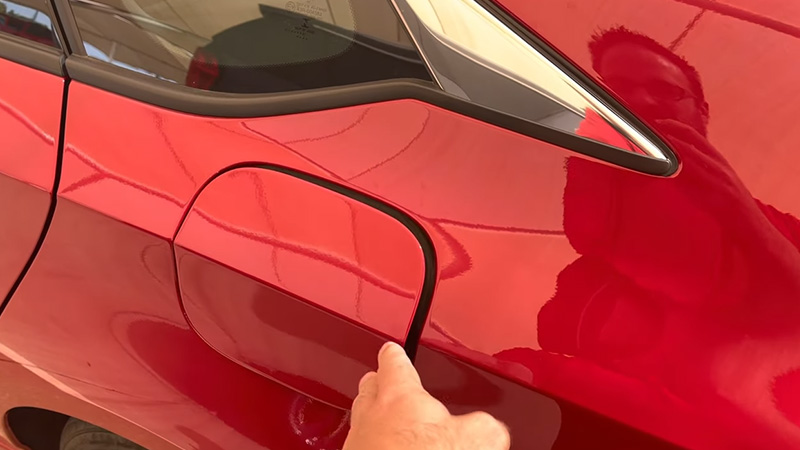How To Open The Gas Tank On A Honda Civic

The Honda Civic, a perennial favorite for its reliability and fuel efficiency, often leaves new owners (and sometimes even seasoned ones) scratching their heads when it comes to a seemingly simple task: opening the gas tank. While the process is straightforward, it varies slightly depending on the Civic's generation. This guide will provide a comprehensive overview, covering various Civic models and addressing common issues you might encounter.
Locating the Fuel Door Release: A Generation-by-Generation Guide
The method for opening the fuel door on a Honda Civic primarily depends on its model year. Here’s a breakdown:
- Fifth Generation (1992-1995) & Sixth Generation (1996-2000): These models typically feature a mechanical release lever located on the floor, to the left of the driver's seat. Look for a lever, often marked with a fuel pump symbol, near the hood release. Pulling this lever will release the fuel door.
- Seventh Generation (2001-2005) & Eighth Generation (2006-2011): These generations also utilize a mechanical release lever in the same location as the fifth and sixth generations – to the left of the driver's seat on the floorboard. Ensure that nothing is obstructing the lever's movement.
- Ninth Generation (2012-2015) & Tenth Generation (2016-2021) & Eleventh Generation (2022-Present): Honda transitioned to an electronic release mechanism for these models. There is no physical lever. Instead, the fuel door should open with a simple push on the fuel door itself. Ensure the car is unlocked, as some models require the doors to be unlocked for the fuel door to open. The door is spring-loaded and pops open when pressed.
Step-by-Step Instructions for Opening the Fuel Door
Based on the generation of your Honda Civic, follow these steps:
For Civics with a Mechanical Release Lever (1992-2011):
- Locate the Fuel Door Release Lever: As mentioned earlier, it’s typically found on the floor, to the left of the driver's seat.
- Pull the Lever: Give the lever a firm pull. You should hear a click, indicating that the fuel door has been released.
- Open the Fuel Door: Get out of the car and gently push on the edge of the fuel door (usually on the right side) to open it fully.
For Civics with an Electronic Release (2012-Present):
- Ensure the Vehicle is Unlocked: Some models require the doors to be unlocked for the fuel door to operate.
- Push on the Fuel Door: Gently press on the edge of the fuel door. It should pop open. If it doesn't, try pressing in a different spot or ensure the car is definitely unlocked.
- Access the Fuel Cap: Once the fuel door is open, unscrew the fuel cap counterclockwise to remove it.
Troubleshooting Common Issues
Sometimes, opening the fuel door can be problematic. Here are some common issues and how to address them:
- Frozen Release Lever: In cold weather, the release lever mechanism can freeze. Try gently wiggling the lever. If that doesn't work, try warming the area around the lever with a hairdryer (on a low setting) or by running the car's heater for a few minutes. Never use open flames.
- Stuck Fuel Door: If the release lever works, but the fuel door remains stuck, try gently prying the door open with a plastic trim removal tool. Avoid using metal tools, as they can damage the paint. You may also need to lubricate the hinge and latch mechanism with a silicone-based lubricant like WD-40 Specialist Silicone Lubricant.
- Faulty Electronic Release: If your Civic has an electronic release and the fuel door won’t open, first check the car's fuses. A blown fuse could be the culprit. Refer to your owner's manual to locate the fuel door fuse. If the fuse is good, the problem might lie with the actuator motor or the fuel door release switch. This might require professional diagnosis.
- Vacuum Lock: In rare cases, a vacuum can form inside the fuel tank, making it difficult to remove the fuel cap. Try gently twisting the cap while applying slight outward pressure. If that doesn’t work, consult a mechanic.
Fuel Cap Considerations
After refueling, remember to properly tighten the fuel cap. A loose fuel cap can trigger the "Check Engine" light and reduce fuel efficiency. Always tighten the cap until it clicks at least once, signaling a proper seal. Also, it is crucial to use the correct OEM (Original Equipment Manufacturer) fuel cap or a high-quality aftermarket equivalent. Using a cap that doesn't seal properly can cause evaporation and emissions issues.
Preventative Maintenance
To ensure smooth operation, periodically lubricate the fuel door hinge and latch mechanism with a silicone-based lubricant. This will help prevent sticking and corrosion. Check the fuel cap seal for cracks or damage and replace it if necessary. Regular maintenance will help keep your Honda Civic running smoothly for years to come.
